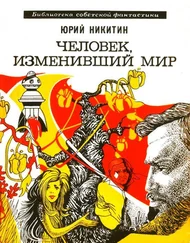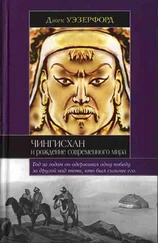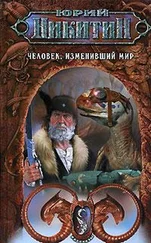As graphically portrayed in Chan, Fall of the Jurchen Chin.
Waley, Travels of an Alchemist, p. 34.
d'Ohsson, Histoire II p. 40.
d'Ohsson, Histoire II p. 41.
JR II p. 1139.
Franke, Geschichte iv pp. 288–289.
d'Ohsson, Histoire II pp. 43–44.
d'Ohsson, Histoire II pp. 45–46.
Franke, Geschichte iv p. 290.
See below, Chapter 15.
Franke & Twitchett, Cambridge History p. 264.
Peterson, 'Old Illusions,' loc. cit. p. 224.
Franke, Geschichte iv p. 290.
Franke, Geschichte v p. 137; JR II p. 1139.
Barfield, Perilous Frontier p. 198.
Grousset, Empire p. 259.
У автора — Коден . — Прим. пер .
Peterson, 'Old Illusions,' loc. cit. pp. 226–230.
Franke, Geschichte iv pp. 291–303, 350; d'Ohsson, Histoire II pp. 78–84.
Henthorn, Korea, p. 53; Kuno, Japanese Expansion ii. pp. 387–393; Hazard, Japanese Marauders.
Henthorn, Korea, pp. 61–68, 93–94; G. Ledyard, 'The Mongol Campaign in Korea and the dating of the Secret History of the Mongols,' Central Asiatic Journal 9 (1964) pp. 1–22.
Yule & Cordier, Marco Polo, II. pp. 180–181.
Henthorn, Korea pp. 68–75, 93–99; Louis Hambis, 'Notes sur l'histoire de Coree a l'epoque mongole,' T'oung Pao 45 (1957) рр. 151–218.
Hans Sagaster, 'The History of Buddhism among the Mongols,' in Heirman & Bumbacher, Spread of Buddhism pp. 379–432; Paul Ratchnevsky, 'Die Mongolische Grosskhane und die buddhistische Kirche,' Asiatica: Festchrift F. Weller (1954) pp. 489–504.
Allsen, Royal Hunt p. 23.
Henthorn, Korea pp. 92–101.
Allsen, Culture and Conquest p. 53; Atwood, Encyclopedia p. 319.
Turrel J. Wylie, 'The First Mongol Conquest of Tibet Reinterpreted,' Harvard Journal of Asiatic Studies 37 (1977) pp. 103–133 (at pp. 103–106).
Са-пан. — Прим. пер .
Turrel J. Wylie, 'The First Mongol Conquest of Tibet Reinterpreted,' Harvard Journal of Asiatic Studies 37 (1977) p. 112.
SHR pp. 209–213; W Abramowski, 'Die chinesischen Annalen von Ogodei und Giiyuk,' loc. cit. pp. 117–167 (at p. 152); Jackson & Morgan, Rubruck pp. 33–39. According to Yarshater, Encyclopedia Iranica viii pp. 366–367, the Eljigidei employed by Ogodei is not the same as the one employed by Genghis to execute Jamuga and the one who destroyed Herat in 1222, but this theory of 'two Eljigideis' does not command universal assent.
Buell, Dictionary p. 202.
Rachewiltz, In the Service pp. 95–112.
Также Балджун, Балджунский договор. — Прим. пер .
Paul D. Buell, 'Chinqai (1169–1252), Architect of Mongolian Empire,' in Kaplan & Whisenhunt, Opuscula Altaica pp. 168–186.
Franke & Twitchett, Cambridge History p. 373; Waley, Travels of an Alchemist p. 92; Bretschneider, Mediaeval Researches I p. 70.
Francis Woodman Cleaves, 'A Chancellery Practice of the Mongols in the Thirteenth and Fourteenth Centuries,' Harvard Journal of Asiatic Studies 14 (1951) pp. 493–526; Istvan Vasary, 'The Origins of the Institution of Basqaqs,' Acta Orientalia Academiae Scientiarum Hungaricae 32 (1978) pp. 201–206; Vasary, 'The Golden Horde Term Daruga and its Survival in Russia,' Acta Orientalia Academiae Scientiarum Hungaricae 30 (1976) pp. 187–196; Barthold, Turkestan pp. 468–469.
Introductory remarks are found at Ratchnevsky, Genghis Khan, p. 138 and d'Ohsson, Histoire iv pp. 381–405. Deeper analysis is provided in Vasary, 'The Origin of the Institution of Basqaqs,' loc. cit. p. 323; Spuler, Mongolen in Iran pp. 40–42; Spuler, Goldene Horde p. 338; Doerfer, Turkische und mongolische Elemente iv p. 242. The institution of daruqachi was one of Genghis's innovations that survived into the Yuan empire of China. For a detailed study see Endicott-West, Mongolian Rule.
For Chinqai's huge importance into the reign of Guyuk in the mid-i24os see Dawson, Mongol Mission pp. 63–67.
Paul D. Buell, 'Sino-Khitan administration in Mongol Bukhara,' Journal of Asian History 13 (1979) pp. 121–151.
Rachewiltz, In the Service pp. 122–128 (esp. p. 123).
SHO p. 254; SHR p. 195; Spuler, Mongolen in Iran pp. 40–42; Lane, Daily Life p. 62; Christian, History of Russia I p. 415.
Rachewiltz, In the Service pp. 124–125.
Two studies of Yelu by Rachewiltz are fundamental: 'Yeh-lii Ch'u-ts'ai (1189–1243): Buddhist Idealist and Confueian Statesman,' in Wright & Twitchett, Confueian Personalities pp. 189–216 and the entry in In the Service, op. cit. pp. 136–175.
Rachewiltz, 'Yeh-lu… Buddhist Idealist,' loc. cit. pp. 192–193; Rachewiltz, In the Service pp. 139–140.
Rachewiltz, 'The Hsi-Yu-lu by Yeh-Lu Ch'u Ts'ai,' Monumenta Serica 21 (1962) pp. 1–128 (esp. pp. 17–37).
Wittfogel & Feng, Liao pp. 749–751.
Bretschneider, Mediaeval Researches I pp. 9–10.
Rachewiltz, 'Yeh-lu… Buddhist Idealist,' loc. cit. pp. 194–195.
Gumilev, Imaginary Kingdom p. 238. Some scholars have gone the other way and claim that Yelu has been vastly overrated (Buell, Dictionary pp. 287–289).
Allsen, Culture and Conquest pp. 177–179; Buell, Dictionary pp. 133–134.
Grousset, Empire p. 321. The 'horseback' quote is notoriously migratory, having been attributed to a number of sages during Chinese history.
Честных намерений ( лат .).
H. F. Schurmann, 'Mongolian tributary practices of the thirteenth century,' Harvard Journal of Asiatic Studies 19 (1956) pp. 304–389.
Rachewiltz, 'Yeh-lu… Buddhist Idealist,' loc. cit. p. 202; Rachewiltz, In the Service pp. 151–152.
Allsen, Imperialism pp. 144–148.
Быт. 16:12.
Rachewiltz, 'Yeh-lu… Buddhist Idealist,' loc. cit. pp. 212–213.
Читать дальше
Конец ознакомительного отрывка
Купить книгу







![Ксения Чепикова - Человек, научивший мир читать [История Великой информационной революции]](/books/388624/kseniya-chepikova-chelovek-nauchivshij-mir-chitat-ist-thumb.webp)

